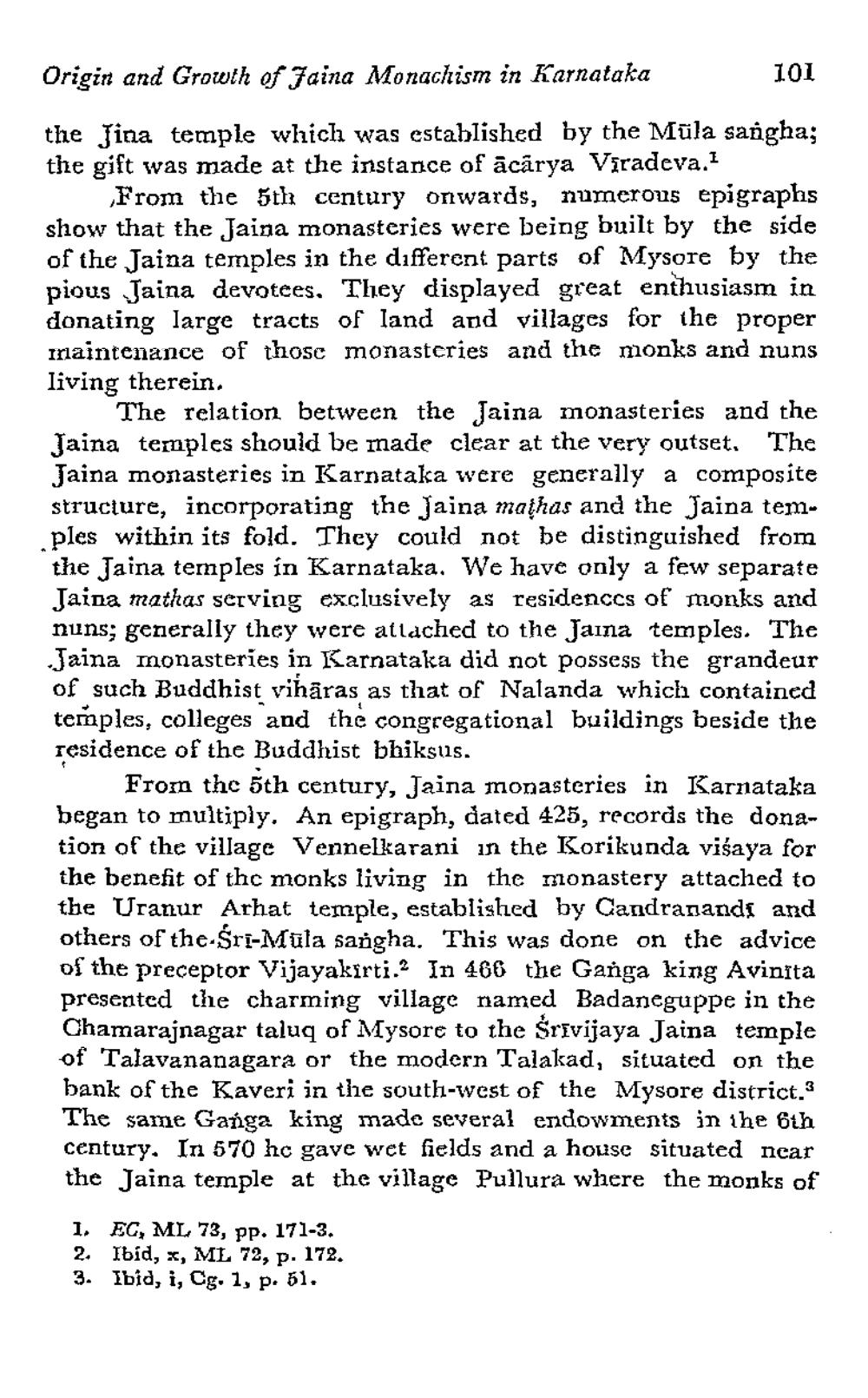________________
Origin and Growth of Jaina Monachism in Karnataka
101
the Jina temple which was established by the Müla sangha; the gift was made at the instance of acārya Varadeva.?
From the 5th century onwards, numerous epigraphs show that the Jaina monasteries were being built by the side of the Jaina temples in the different parts of Mysore by the pious Jaina devotees. They displayed great enthusiasm in donating large tracts of land and villages for the proper maintenance of thosc monasteries and the monks and nuns living therein.
The relation between the Jaina monasteries and the Jaina temples should be made clear at the very outset. The Jaina monasteries in Karnataka were generally a composite structure, incorporating the Jaina mathas and the Jaina tem. ples within its fold. They could not be distinguished from the Jaina temples in Karnataka. We have only a few separate Jaina mathas serving exclusively as residences of monks and nuns; generally they were attached to the Jaina temples. The Jaina monasteries in Karnataka did not possess the grandeur of such Buddhist vihāras as that of Nalanda which contained temples, colleges and the congregational buildings beside the residence of the Buddhist bhiksus.
From the 5th century, Jaina monasteries in Karnataka began to multiply. An epigraph, dated 425, records the donation of the village Vennelkarani in the Korikunda visaya for the benefit of the monks living in the monastery attached to the Uranur Arhat temple, established by Candranandi and others of the-Sri-Müla sangha. This was done on the advice of the preceptor Vijayakirti.2 In 466 the Ganga king Avinsta presented the charming village named Badaneguppe in the Chamarajnagar taluq of Mysore to the Srivijaya Jaina temple of Talavananagara or the modern Talakad, situated on the bank of the Kaveri in the south-west of the Mysore district. The same Ganga king made several endowments in the 6th century. In 570 hc gave wet fields and a house situated near the Jaina temple at the village Pullura where the monks of
1. EC, ML 73, pp. 171-3. 2. Ibid, x, ML 72, p. 172. 3. Ibid, i, Cg. 1, p. 51.




